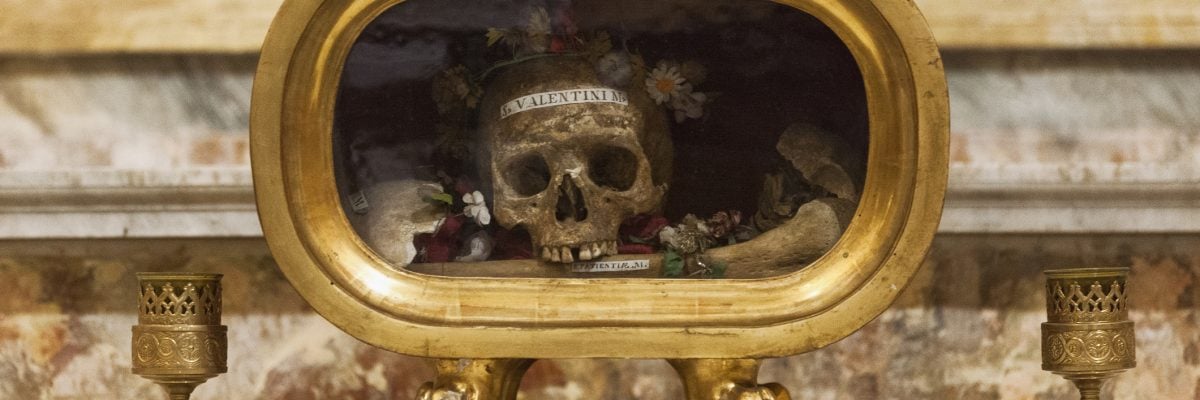Saints Pope John Paul II is not a dead sinner.
Like all saints in heaven, Saint Pope John Paul II lives and beholds the face of God.
Like all saints in heaven, Saint Pope John Paul II is more alive than you or me:
As Paul said: "For now we see through a glass, darkly; but then face to face: now I know in part; but then shall I know even as also I am known."
Saint Paul and Saint Pope John Paul II BOTH now know even as also they are known.
The charge of
pagan idolatry is both rude and ridiculous, and also reflect a high level of ignorance of Relics and the early Church.
Relics have always been important to Christians going back to the first century and the first Christians.
And I quote:
This tract lays out the Catholic view of relics by taking a look at the actual practices and their roots in Church history and Scripture.

www.catholic.com
Relics in Early Christianity
The veneration of relics is seen explicitly as early as the account of Polycarp’s martyrdom written by the Smyrnaeans in A.D. 156. In it, the Christians describe the events following his burning at the stake: “We took up his bones, which are more valuable than precious stones and finer than refined gold, and laid them in a suitable place, where the Lord will permit us to gather ourselves together, as we are able, in gladness and joy and to celebrate the birthday of his martyrdom.”
In speaking of the veneration of relics in the early Church, the anti-Catholic historian Adolph Harnack writes, “[N]o Church doctor of repute restricted it. All of them rather, even the Cappadocians, countenanced it. The numerous miracles which were wrought by bones and relics seemed to confirm their worship. The Church therefore would not give up the practice, although a violent attack was made upon it by a few cultured heathens and besides by the Manichaeans” (Harnack,
History of Dogma, tr., IV, 313).
In the fourth century the great biblical scholar, Jerome, declared, “We do not worship, we do not adore, for fear that we should bow down to the creature rather than to the creator, but we venerate the relics of the martyrs in order the better to adore him whose martyrs they are” (
Ad Riparium, i, P.L., XXII, 907). `
Relics in Scripture
Keep in mind what the Church says about relics. It doesn’t say there is some magical power in them. There is nothing in the relic itself, whether a bone of the apostle Peter or water from Lourdes, that has any curative ability. The Church just says that relics may be the occasion of God’s miracles, and in this the Church follows Scripture.
The use of the bones of Elisha brought a dead man to life: “So Elisha died, and they buried him. Now bands of Moabites used to invade the land in the spring of the year. And as a man was being buried, lo, a marauding band was seen and the man was cast into the grave of Elisha; and as soon as the man touched the bones of Elisha, he revived, and stood on his feet” (2 Kgs. 13:20-21). This is an unequivocal biblical example of a miracle being performed by God through contact with the relics of a saint!
Similar are the cases of the woman cured of a hemorrhage by touching the hem of Christ’s cloak (Matt. 9:20-22) and the sick who were healed when Peter’s shadow passed over them (Acts 5:14-16). “And God did extraordinary miracles by the hands of Paul, so that handkerchiefs or aprons were carried away from his body to the sick, and diseases left them and the evil spirits came out of them” (Acts 19:11-12).
If these aren’t examples of the use of relics, what are? In the case of Elisha, a Lazarus-like return from the dead was brought about through the prophet’s bones. In the New Testament cases, physical things (the cloak, the shadow, handkerchiefs and aprons) were used to effect cures. There is a perfect congruity between present-day Catholic practice and ancient practice. If you reject all Catholic relics today as frauds, you should also reject these biblical accounts as frauds.

